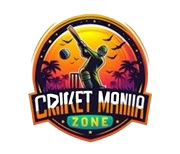Cricket, a sport rich in tradition and complexity, features a unique set of fielding positions essential for both strategy and execution. Whether you’re new to the game or seeking to deepen your understanding, knowing these positions is crucial. To guide you through, we’ll explore the key fielding positions, using transition words to ensure a smooth and coherent flow.
The Basics:
Firstly, it’s critical to distinguish between the infield and outfield. The infield comprises of positions near to the batsman, which are significant for ceasing fast singles and making run-outs. Alternately, the outfield is planned to cover a bigger zone, anticipating boundaries and catching long shots.
Key Infield Positions:
The Slip Cordon:
At first, we have the slip cordon. This is often a set of positions found following to the wicketkeeper, known as to begin with slip, moment slip, and so on. Additionally, these defenders are imperative for catching edges off the bat, especially in quick bowling scenarios.
Gully:
Following, we have the ravine position, which is put marginally behind and to the side of the slips. Also, this defender is significant for capture attempt squarer edges that slip past the slips.
Point and Cover:
Moving advance out, point and cover are positioned on the off-side. Whereas point is closer to the batsman, cover stands a bit more profound. Both positions are basic for ceasing cuts and drives through the off-side. Moreover, these positions request fast reflexes and deftness.
Mid-off and Mid-on:
Within the heart of the activity, mid-off and mid-on are situated on either side of the bowler. Ordinarily, mid-off is found on the off-side, whereas mid-on is on the leg-side.Their fundamental portion is to halt straight drives and offer assistance in catching or run-out openings.
Key Outfield Positions:
Third Man and Fine Leg:
At first, within the outfield, we experience third man and fine leg. These positions are found close the boundary, behind the wicketkeeper. Third man is on the off-side, whereas fine leg is on the leg-side. They are basic for handling edges that fly past the slips and the wicketkeeper.
Deep Point and Deep Cover:
Along these lines, profound point and profound cover come into play. Situated encourage out compared to their infield partners, these defenders cover potential boundaries and help in ceasing effective cut shots and drives.
Long Off and Long On:
Additionally, long off and long on are positioned close the boundary, straightforwardly behind the bowler. These positions are significant for capture attempt straight hits that travel down the ground.
Deep Mid-Wicket and Deep Square Leg:
At last, we have profound mid-wicket and profound square leg. These positions are on the leg-side boundary, pointed at halting effective drag shots and snares. They are crucial for controlling the stream of runs in limited-overs cricket.
Specialized Fielding Positions:
Wicketkeeper:
Separated fromthese standard positions, the wicketkeeper holds a special place in the handling setup. Situated straightforwardly behind the stumps, the wicketkeeper is included in catching, puzzling, and run-outs. Moreover, the wicketkeeper frequently acts as the on-field strategist, directing field arrangements.
Silly Point and Short Leg:
In conclusion, senseless point and brief leg are amazingly near handling positions. Senseless point is on the off-side, close the batsman, whereas brief leg is on the leg-side. These positions are utilized to make weight and capture any protective or edge shots that pop up.
Conclusion:
In conclusion, understanding cricket handling positions is crucial to increasing in value the game’s technique and aptitude. Each position, whether infield or outfield, plays a particular part that contributes to the team’s overall performance. By acing these positions, players can upgrade their handling viability and altogether affect the result of the coordinate. In this way, another time you observe or play cricket, you’ll have a more profound knowledge into the captivating world of handling positions.

